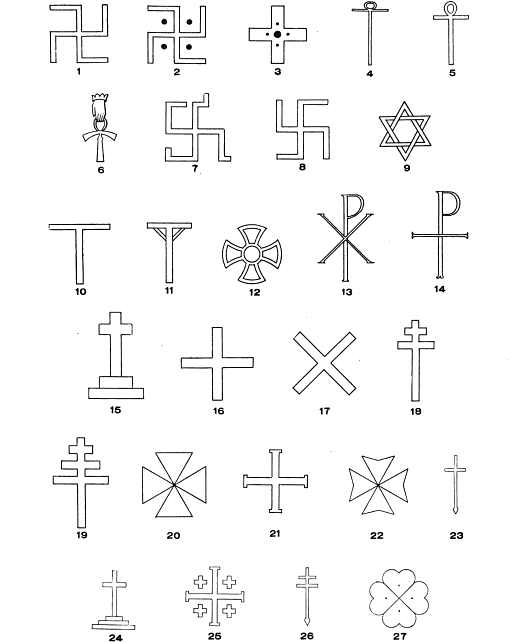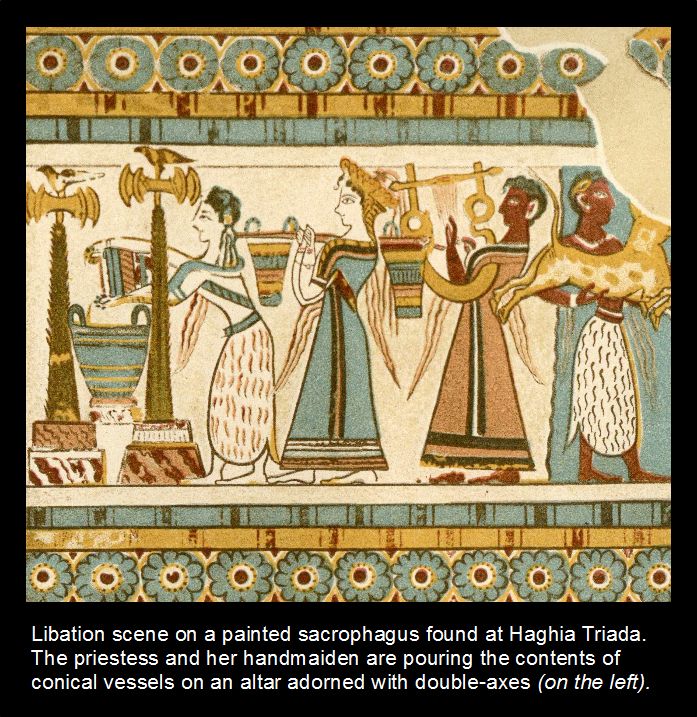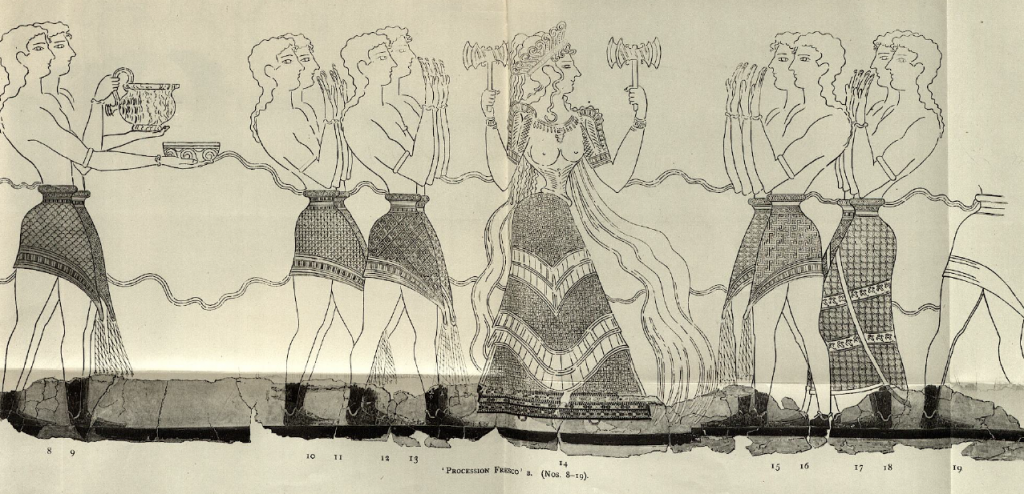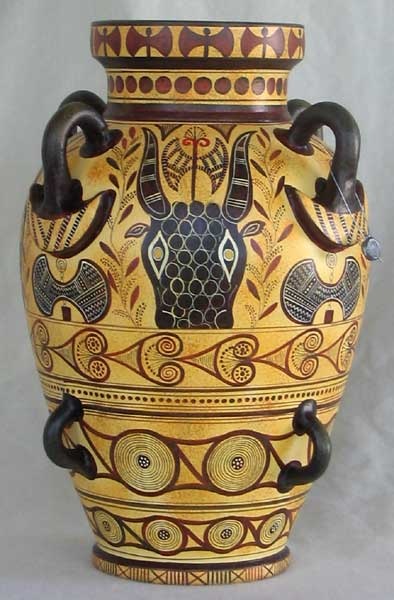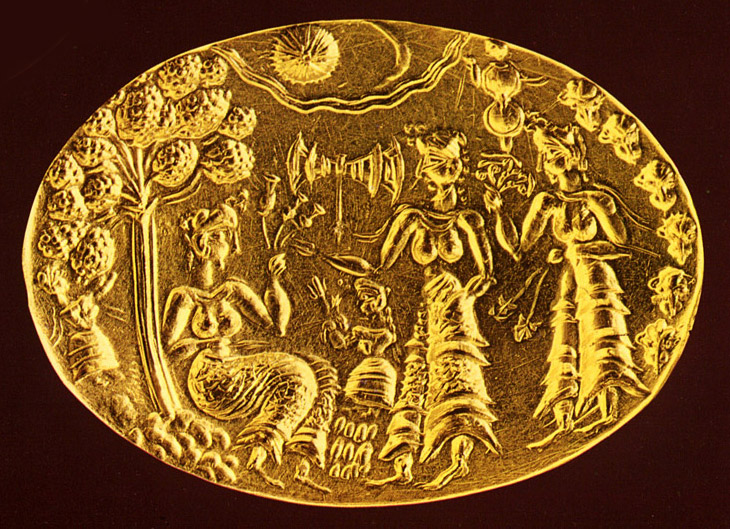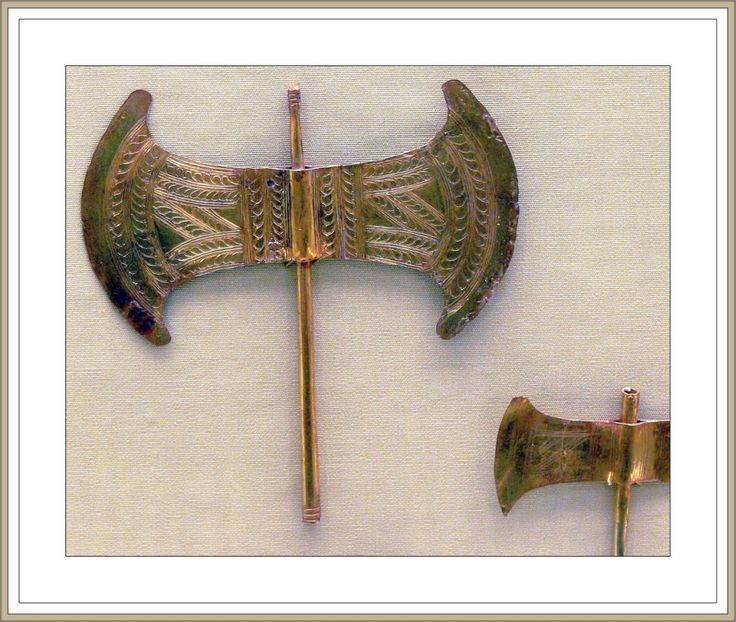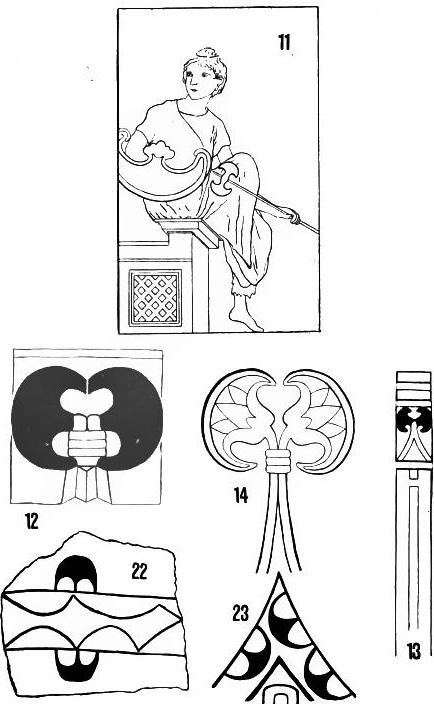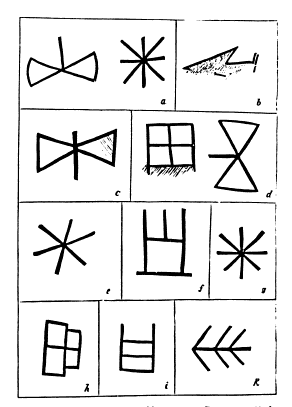by Moe | Nov 18, 2013 | DNA, History of the Brotherhood, Uncategorized
The Kohen (Cohen, Kohain; Hebrew: כֹּהֵן, plural כֹּהֲנִים Kohanim or the English Koan) come from the YDNA Haplogroup 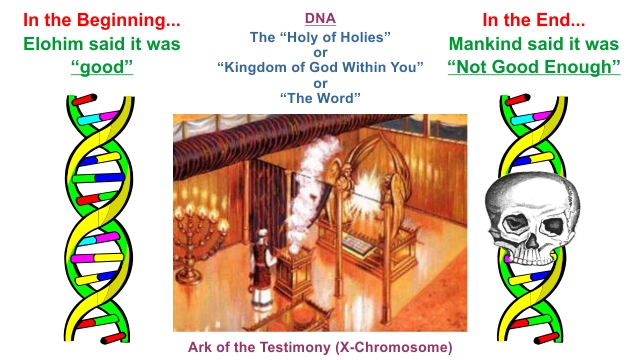 E-M215 (formerly E3b1a) and also haplogroups J1 and J2. For the purpose of this article, I will focus on the E-M123 haplogroup, that I believe is the Kohanim Levite branch of the original priesthood from the island of Kos (Now Dia) who had separated from the other Tribes of Israel at the time of the destruction of the Temple.
E-M215 (formerly E3b1a) and also haplogroups J1 and J2. For the purpose of this article, I will focus on the E-M123 haplogroup, that I believe is the Kohanim Levite branch of the original priesthood from the island of Kos (Now Dia) who had separated from the other Tribes of Israel at the time of the destruction of the Temple.
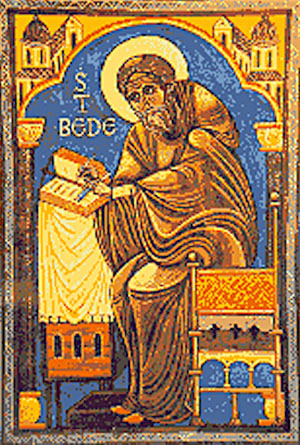 This is when the Kohanim Levites were absorbed or taken over by the Roman Empire under the leadership of Augustus Caesar in the 1st century. These events can now be tracked by historical accounts, artifacts and DNA. One of these accounts comes from one of the most famous Doctors of the Catholic Church and also the Father to English History, the Venerable Saint Bede (Beda). Bede had written on the Levites being connected to the Catholic Church in his book, “On Ezra and Nehemiah;” “Allegorically, the Levites represent those attached to the Catholic Church.” Hence, Bede is clearly stating that the Levites had become attached to the Catholic Church; I believe this happened when the Tribes of Israel were separated during the Exodus from their original homelands. This is why you can find the DNA of the Kohen Levite, which spread around the world in all the same cities where the Romans had conquered and rebuilt their empires.
This is when the Kohanim Levites were absorbed or taken over by the Roman Empire under the leadership of Augustus Caesar in the 1st century. These events can now be tracked by historical accounts, artifacts and DNA. One of these accounts comes from one of the most famous Doctors of the Catholic Church and also the Father to English History, the Venerable Saint Bede (Beda). Bede had written on the Levites being connected to the Catholic Church in his book, “On Ezra and Nehemiah;” “Allegorically, the Levites represent those attached to the Catholic Church.” Hence, Bede is clearly stating that the Levites had become attached to the Catholic Church; I believe this happened when the Tribes of Israel were separated during the Exodus from their original homelands. This is why you can find the DNA of the Kohen Levite, which spread around the world in all the same cities where the Romans had conquered and rebuilt their empires.
This is also explained in several places in the bible, such as in the Book of Genesis, where the third son of Jacob is the founder of the Israelite Tribe of Levi. Hence, this would make Joseph the lawful founder of the Levites; for whom King David said, “None ought to carry the ark of God, but the Levites; for them hath the Lord chosen to carry the ark of God, and to minister unto him for ever.” Also, when Joshua led the Israelites into the land of Canaan, the Levites were the only Israelite tribe that received cities, but were not allowed to be landowners “because the Lord, the God of Israel Himself is their inheritance” (Deuteronomy 18:2). (Wikipedia) In the Book of Malachi, God explains why he chose the Levites to be his priests. This would make sense, since the high priests for judgment of the New Testament are the Levites. The root in Hebrew means “to join,” to “‘ bind ” (see Lui-than “snaky-monster “).
When the land of Israel was apportioned among the tribes in the days of Joshua, the Tribe of Levi, being chosen as priests, did not receive land (Joshua 13:33, (14:3). However, the tribe of Levi were given cities. Six cities were given to the tribe as refuge cities for all men of Israel, which were to be controlled by the Levites. Three of these cities were located on each side of the Jordan River. In addition, 42 other cities (and their respective open spaces), totaling 48 cities were given to the Tribe of Levi. (Numbers 35).
This is very important in understanding, that out of all the Tribes of Israel, it was only the Levites that received cities. Some of these cities I believe are Sicily and Venice. It is also important to understand, who were Levites in the bible, and who were not. For example, some of the most important biblical people were Moses and his brother Aaron, who were both Levites. The descendants of Levi, the son of Jacob. (LEW (1).] He had three sons: Gershon or Gershom, Kohath, and Merari (Gen. xlvi. 11 ; Exod. vi. 16: Numb. iii. 17; 1 Chron. vi. 10, 43). Moses and Aaron were the grandsons of Kohath, and the great grandsons of Levi (Exod. vi. 16, 18, •JO, 2G). Gershon, Kohath, and Merari all founded families, but a certain prominence attached to the Kohathites, from whom the leaders of Israel at the critical period of the departure from Egypt had sprung (Numb. iv. 1-40);
The descendants of Aaron, who was the first kohen gadol; high priest of Israel, who were designated as the priestly class, the kohanim. In Egypt, the Levites were the only tribe that remained committed to God. During the Exodus, the Levite tribes were particularly zealous in protecting the Mosaic law in the face of those worshipping the Golden Calf, which may have been a reason for their priestly status. As such, kohanim comprise a family dynasty (although people claiming to be kohanim have many haplogroups) within the tribe of Levi, and thus all kohanim are traditionally considered to be Levites, but not all Levites are kohanim. (Wikipedia)
The Levites had helped form the original Catholic Church and many of the first Levites had also assisted in the writing of the New Testament.
KOHANIM LEVITE DNA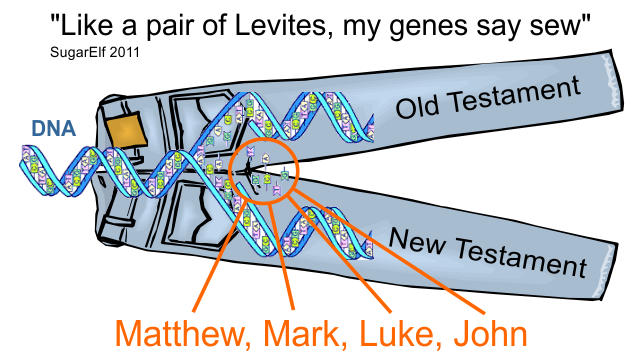
I’m a Kohen of Levite decent and I’m from the United States of America. My DNA was tested in 2011, which told me that I come from the Haplogroup of E1b1b1c; E-M123, which is found scattered widely in Europe, America, Greece, North Africa and the Middle East. You can see proof of my DNA test by clicking here if you like.
This haplogroup is quite common in many Semitic language communities, including among both Ashkenazi and Sephardic Jews, accounting for over 10% of all male lines (Semino 2004). Shen et al. (2004) found 10 out of 169 Israelis and Palestinians of various ancestry to be M123+ and M34+, with the highest level group being 4 out of 20 Israeli Jews of Libyan ancestry.
Semino et al. (2004) reports relatively high levels of 13% in the Albanian community of Cosenza, in Calabria. The ancient town is the seat of the Cosentian Academy, the second academy of philosophical and literary studies to be founded in the old Kingdom of Sicily (1511), and one of the oldest in Europe. There is a Kohanim Levite connection in Sicily, where E-M123 was found by Di Gaetano et al. (2008) to have 4.66% overall in their 236 person study of Sicily, and with higher levels in the east of the island. They found none in Trapani (33 people), Alcamo (24 people), and Cacamo (16 people), along the west of the north coast; 3.23% in San Ninfa (31 people), inland in the west; 3.57% in Sciacca (28 people) and Ragusa (28 people), along the south coast. Also, high levels in the east in Troina (10% of 30 people), Piazza Armerina (10.71% of 28 people), as well as near the Southwestern extreme facing Africa at Mazaro de Vallo (11.11% of 18 people). (Wikipedia)
After the fall of the Western Roman Empire, Troin was a Byzantine stronghold, and during the Islamic period, the religious and moral capital of the Greek and Christian orthodox part of Sicily; Roger I of Sicily had in its castle (which he captured in 1061) also a start base of his conquest of the island. (Wikipedia)
A notably high regional frequency for E-M123 was also found in Oman, where it is apparently the dominant clade of E-M35. The reason a high percentage of Kohanim DNA is found here, is because the Parthian Empire was friendly with the Greeks, and especially under the Arsacid dynasties. An inscription from this time period shows Heracles and the inscription, ΒΑΣΙΛΕΩΣ ΜΕΓΑΛΟΥ ΑΡΣΑΚΟΥ ΦΙΛΕΛΛΗΝΟΣ; “Great King Arsaces, friend of Greeks“. (Wikipedia) They always had a large Jewish community here in the Parthian Empire, and I assume many Kohanim Levites as well. Later the Parthians would also develop a friendly relationship with Rome in the time of Augustus, that had thrived here for centuries before the Persians had conquered the empire in the 7th century A.D. under the banner of Islam that had taken control of these lands.
Here is what FamilyTreeDNA has to say about these haplogroups:
The E haplogroup has been observed in all Jewish groups world-wide. One of its major subclades, E1b1b (formerly E3b) is considered to be the 2nd most prevalent haplogroup among the Jewish population.
According to one major paper, Contrasting patterns of Y chromosome variation in Ashkenazi Jewish and host non-Jewish European populations E-M35, which defines the E1b1b1 (formerly E3b1) haplogroup, is considered to be the second highest, next to J, for “Founding Jewish Lineages” in Europe. It is found in moderate amounts in all Jewish populations, from Ashkenazi, Sephardic, Kurdish, Yemen, Samaritan and even among Djerba Jewish groups.
The Samaritan Kohanim belong to haplogroup E1b1b1a (formerly known as E3b1a).
Samaritans:
Their findings reported on four family lineages among the Samaritans: the Tsdaka family (tradition: tribe of Menasseh), the Joshua-Marhiv and Danfi families (tradition: tribe of Ephraim), and the Cohen family (tradition: tribe of Levi). All Samaritan families were found in haplogroups J1 and J2, except the Cohen family which was found in haplogroup E3b1a-M78.[7] This article predated the E3b1a subclades based on the research of Cruciani, et al.[8] The Samaritan Cohen family were Levites until the previous Cohen family died out around 1700, so the fact that they don’t share CMH is expected. These findings may offer more proof that E1b1 was one of the founding lineages of the Levites.
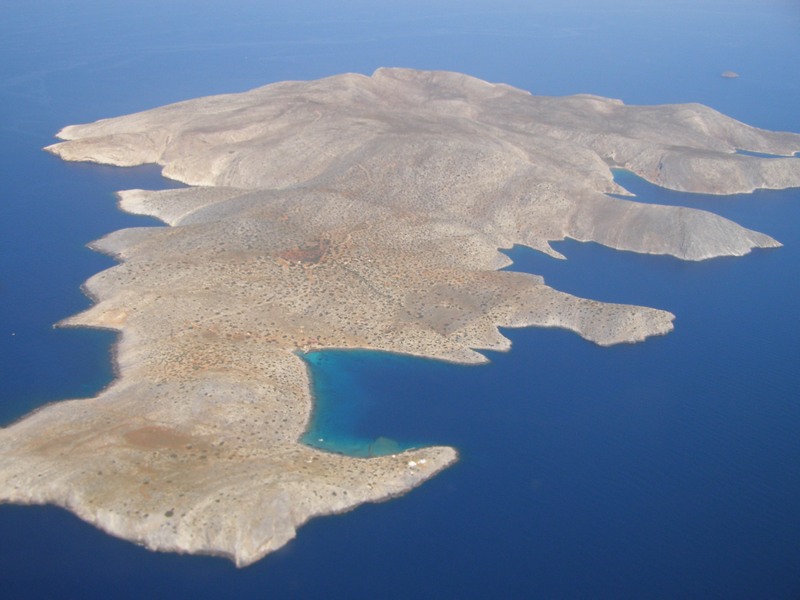 THE ANCIENT ISLAND OF THE KOHEN
THE ANCIENT ISLAND OF THE KOHEN
The name Kohen is the Hebrew spelling of the original Greek word, which is also the current English spelling of “Koan or Coan.” The name simply means ‘priest’, and Kohanim is plural. Hence, before they were called the Kohanim, they were simply known for centuries as the “Koans of Kos.” Some of the most famous people in ancient history, such as the Father of Medicine, Hippocrates, and the Greco-Egyptian Pharaoh, Ptolemy II, come from the family of the Kohanim.
The key to understanding the story of the Kohanim Levites, is to study where they had originally come from. To get up to speed on who the Kohanim were, and where they had lived for many centuries, I suggest you read my previous articles, The Origins of the Kohen Priesthood, Dragon Isle: The Kohen of the Lost Island of Dia, The Royal Purple Silk Prostitute, and The Lost Priesthood of the Kohen. To give you a quick brief summary, they are an ancient family who originally hail from a small island located in the Mediterranean Sea just 7 miles across from Crete, and that today is called Dia. Now the island is completely uninhabited, but at one time, it was one of the most famous and busy islands in all the world. Back then it was known as “Kos (Cos, Coos, Ceus, Letos, Zia etc.)”, and the name was changed several times over history, with the most recent to Dia well after the Romans had conquered or had absorbed their kingdom of the Kohanim Levites into the Republic prior to the 1st century. It was simply known as Kos for approximately 1,000 years from around 550 B.C. through 500 A.D. or later.
KOHEN DNA CAME TO CRETE AND DIA (KOS) FROM THE EAST, IN ETHIOPIA AND EGYPT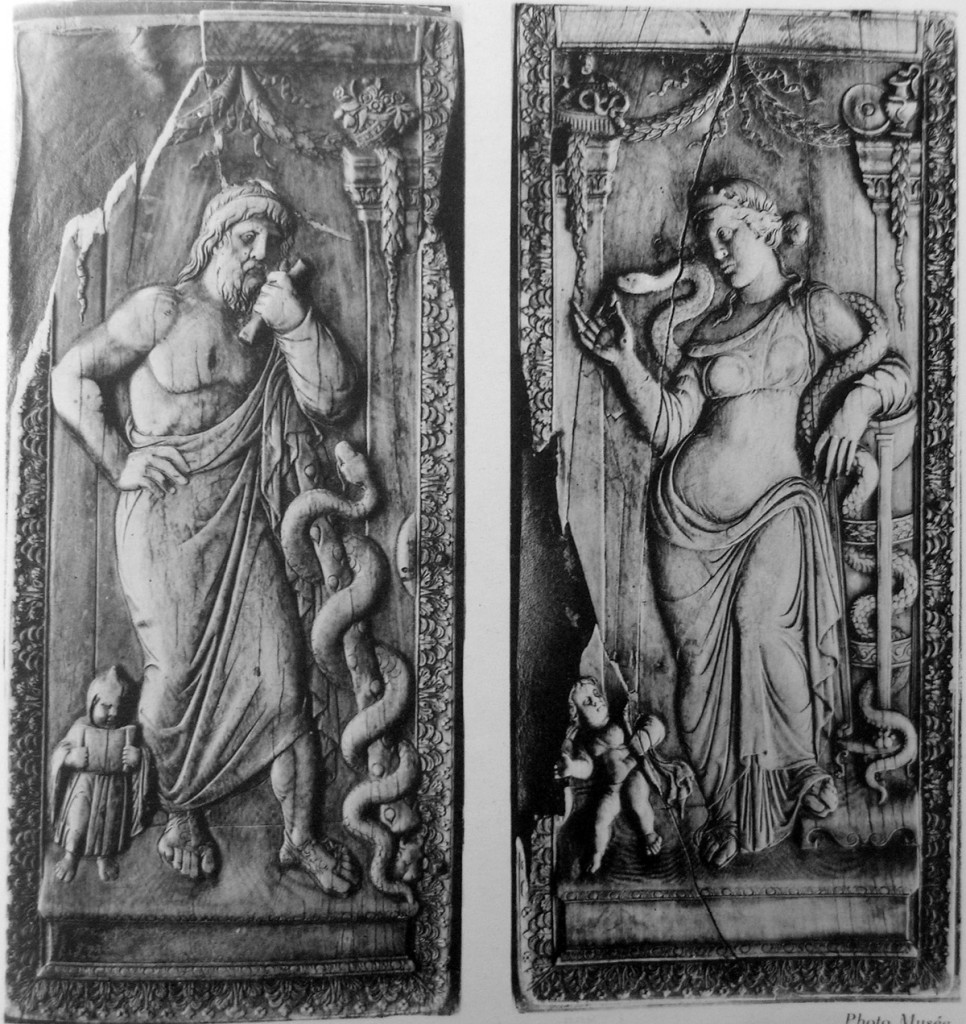
It is likely that this DNA haplogroup had migrated to the island of Dia (Kos) via Egypt, and previously Ethiopia where this DNA can still be found. There are many stories told of the Priests known as the Curetes. According to Diodorus Siculus, the Curetes lived in the time of Rhea; Herodotus and Strabo both had said that the Curetes were originally Phoenicians who accompanied Cadmus (Kadmos or Kadmos) out of Phoenicia. Strabo had written, that these are the names of the various groups known as the Curetes (Kuretes), Corybantes, Dactyls, Cabiri, and Telchines, which are names that are often used interchangeably with one another. I had written about the Telchines and the island of Crete in my article, Crete: The Lost Island of Atlantis;
Herodotus had said that the Curetes had come to Crete with the Phoenician, Prince Cadmus. In Latin, Crete is called “Cappadocia or Cappadocian”; who were known as a large tribe of the Magi, and are also called fire-kindlers. Herodotus tells us that the name of the Cappadocians was applied to them by the Persians, while the Greeks had simply called them “Syrians” or “White Syrians.” The Latin name of the Cappadocians were known as “the men of Caphtor”, and who we can call today, “the men of Crete.”
This DNA haplogroup is also been said to be Phoenician, and even on my DNA certificate, it says that is one of my tribes. The word Cadmus, in Hebrew signifies “One who came from the East.” He was a Phoenician Prince who was the founder of the Ancient City of Thebes, and the first to introduce letters to the Greeks. Hence, the Curetes would be the descendants of the Ancient Priesthood of Thebes who were of a distinct race called the Phoenicians who had come from the East into the West, to the island of Crete and Dia (Kos)where they would continue their religious rites and ceremonies under new Gods and Goddesses imported with them from Egypt.
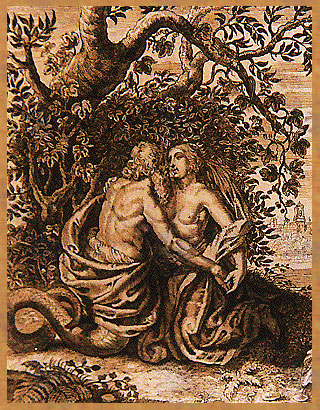 In other history, these people were also known as the Boetians, Cadmeans, Dorians and Spartans. In the Talmud, the Samaritans are called Cutheans (Hebrew: כותים, Kutim). The Cutheans were from ‘Cuthah’, which was one of several cities from which people were brought to Samaria. A colony of Cutheans (Samaritans) had settled in Crete, whose priests were the ancient Curetes, and in the bible, the Kohanim Levites. As I stated above, the island we know of as Crete today, was called Keftiu and Kaftor in the Ancient Egyptian texts, or Caphtor in the Old Testament.
In other history, these people were also known as the Boetians, Cadmeans, Dorians and Spartans. In the Talmud, the Samaritans are called Cutheans (Hebrew: כותים, Kutim). The Cutheans were from ‘Cuthah’, which was one of several cities from which people were brought to Samaria. A colony of Cutheans (Samaritans) had settled in Crete, whose priests were the ancient Curetes, and in the bible, the Kohanim Levites. As I stated above, the island we know of as Crete today, was called Keftiu and Kaftor in the Ancient Egyptian texts, or Caphtor in the Old Testament.
As you can see, the many stories and various names can make this research very confusing and unintelligible for some people. But if you are a fellow Kohen who is actually from the same DNA haplogroup, it should not be that difficult because it is built within your blood via Gnosis. However, for the sake of everyone and for this article, I will mainly focus on the Kohanim Levites from the island of Dia (Kos).
THE KOHEN OF DIA (KOS) ARE TAKEN OVER BY ROME 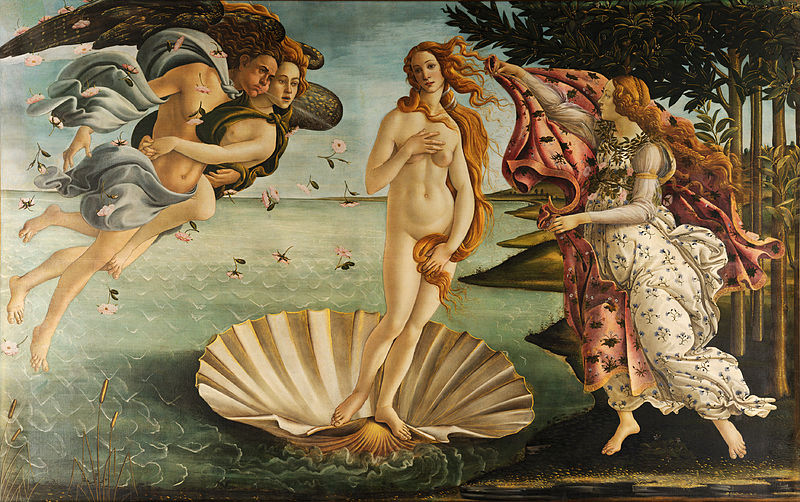 AND GIVEN SPECIAL CITIZEN STATUS IN THE REPUBLIC
AND GIVEN SPECIAL CITIZEN STATUS IN THE REPUBLIC
This new name of the island of Dia is derived from the Roman Goddess, Diana which is modeled after the Goddess named Aphrodite. They are all deviations of the Goddess Venus who embodies love, sex, seduction, beauty, and the goddess of prostitutes. The name Venus is derived from venus, meaning “sexual love” and “sexual desire.” The key in understanding the significance of the name change, is because at the time when Rome had conquered the Kohen of Kos, Augustus Caesar had taken their chief ornament of Venus rising from the sea from the island, to Rome. In doing so, he had given the Kohanim Levites special citizen status in the Roman Empire. This is also mentioned in the time of Emperor Claudius, who in 53 A.D. granted the Tribe of the Kohanim Levites immunity from taxes.
These events with Rome are paramount in tracking this family and their DNA after they had abandoned the Island of Dia (Kos). This is the exact reason why their DNA can be found widely around the world, and often near Roman settlements. What happened, is after they were conquered by the Romans around the 1st century, thereafter they were absorbed into various sections of the Roman Republic because of their talents and extreme wealth. Not only were they the 1st people in history given special tax-free service in Rome, but their priesthood was chosen as the only priesthood that would be accepted into Rome; the Kohanim would play a large role in forming the Roman Priesthood and government. These facts can be proved by both historical accounts that I have listed in many of my previous articles, and now also by DNA science.
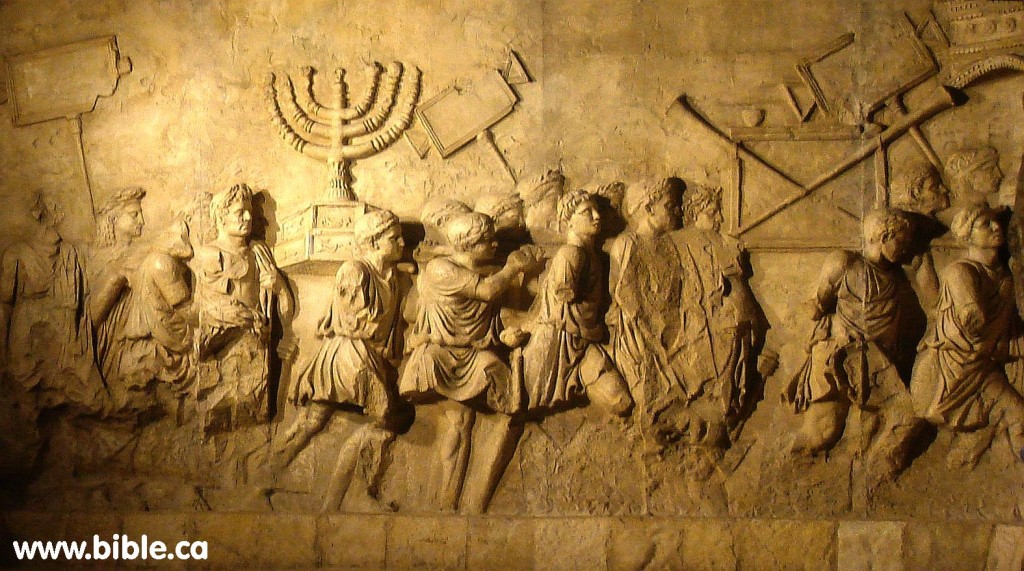 THE EXODUS OF THE KOHEN FROM DIA AND THE DNA THEY LEFT BEHIND
THE EXODUS OF THE KOHEN FROM DIA AND THE DNA THEY LEFT BEHIND
Before the Kohanim were taken over or absorbed into Rome, they were well-known as an educated people who were in high demand around the world. Their arts and inventions were needed by various government officials, such as in Athens and Rhodes, so they would often travel and be hired to handle various tasks set forth by their employers. Examples of these Kohen would be Prodicus (Greek: Πρόδικος, Pródikos; c. 465 BC – c. 395 BC), a Greek philosopher, who was part of the first generation of Sophists who went to Athens as an ambassador from Dia 9Kos); he became well-known as a speaker and a teacher. There is Philitas (340 – 285 BC), who was a scholar and poet during the early Hellenistic period of ancient Greece, and in the second half of the 4th century BC was appointed tutor to the heir to the throne, Ptolemy I of Ptolemaic Egypt. In addition, another Kohen of Kos who left the island and made his influence in another country is Erasistratus of Kos, who was a Greek anatomist and royal physician under Seleucus I Nicator of Syria.
So, a whole 300 years before they were absorbed by Rome, they were already in high demand and traveling around the world to places such as Athens, and the royal courts of Egypt and Syria. This is why it is rather difficult to properly track the DNA of the original Samaritan Kohen, and why it is imperative, that in order to track this tribe, we need to research their original homelands before, and also right after the Exodus from their tiny island of Dia (Kos). This island of Dia (Kos) is now completely uninhabited, so there is no one to test there for DNA. Hence, they had moved from Dia (Kos) a long time ago, and most likely away from Crete as well, because their DNA there is the lowest in all of Greece.
Many of these facts are found in historical accounts, that can also be compared to their specific DNA Haplogroups that were found in the places they had went during their golden purple years and also after leaving their homeland of Dia (Kos). Places we can study, such as Rhodes and Dia (Kos) which were the great Dorian islands, and also Thessaly. In Italy, they can be found in cities such as Rome, Sicily and Venice, and also throughout Europe in places such as Ireland, Britain, England, Scotland, and many other countries. Their DNA footprints in these locations is small, but their influence has always been huge.
In Greece, the most dominant DNA haplogroup is E1b1 and is found all around the Mediterranean Sea. I had written about this fact in my article, Greek YDNA haplogroups. This is the reason that in recent DNA tests, 1038 samples confirms that the Greeks tested were;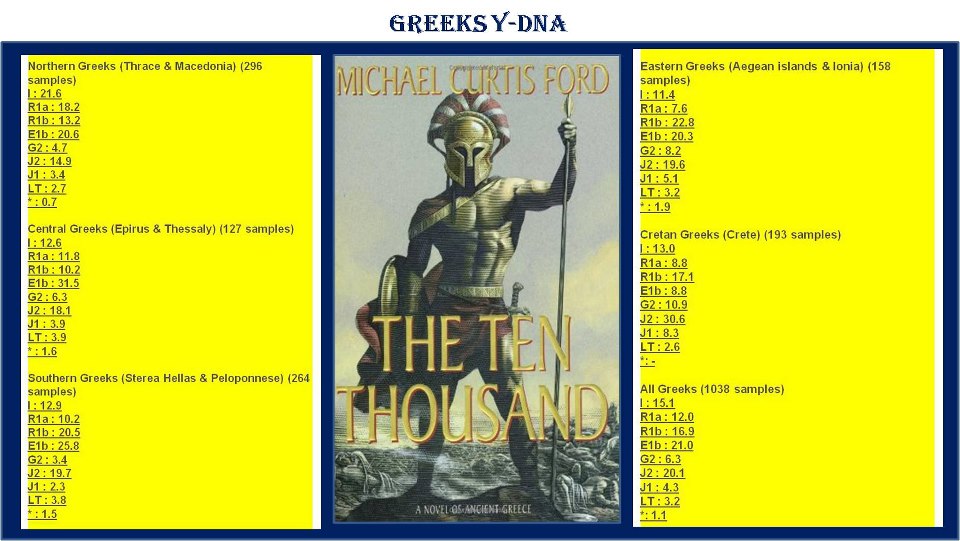
The overall DNA results for all of Greece were as follows:
I : 15.1
R1a : 12.0
R1b : 16.9
E1b : 21.0
G2 : 6.3
J2 : 20.1
J1 : 4.3
LT : 3.2
*: 1.1
The highest DNA Haplogroup was E1b1b, and it was found in high concentrations in cities such as Thessaly @ 31.5%, and also at Hellas and Ionia. It is at these same locations, where science is confirming this haplogroup, along with history, which also confirms that the Kohanim were a huge influence in these exact same places. For example, there have been text found of several decrees of the Kohen from Thessaly, where the national heroes of Dia (Kos), the Temple Asklepiadae, represent Thessaly.
Greek mythology in regards to the Dorians also connects these two places with the Kohen priesthood. There are connections to Ionia and the Kohen, because as I mentioned above, the Kohen were also known as a tribe of the Dorians, and there was a well-known Dorian and Boetian migration and colonization of all these same areas. These events are explained by Herodotus;
Herodotos tells us that Kos and the adjacent islands were colonized from Epidauros, and in this way the old Dorian element was strengthened. The sterner features of the Dorian character were, however, mollified in Kos. The discipline (dyaryi;) of Sparta and Crete is not found there, though the population of the island was purely Dorian, and was divided into the three Dorian tribes, the Dymanes, Hylleis, and Pamphyli. Six of the cities in this region formed a religious league, the Doric Hexapolis. They were, besides Kos, Lindos, Ialysos, Kamiros, Knidos, and Halikarnassos. These states met at the temple of Apollo on the Triopian promontory, to take part in the worship of the god and also in games. Later on Halikarnassos it was expelled, and the Hexapolis became a Pentapolis.
Now with the help of science, we can find DNA haplogroups that place the Dorians and Samaritan Kohen in all these cities in Greece that I had mentioned above, and also in locations that connect them with Rome. We can also verify that they were given special tax and citizen status in Rome, and also possibly cities such as Venice and Sicily where we can also find their DNA at about 6.6%. These two places have seen a strong cultural influence of these people all throughout their governments and arts that can be witnessed to this day. The Venetians would have a strong influence in the area of the Mediterranean Sea, such as when the Venetians had first occupied the island of Crete in 1205 A.D. and took over complete rule of the island in 1212. They had exposed the Greek population there to a new Renaissance and learning like they haven’t seen in centuries. They would rule Crete for approximately 500 years, until 1715 when the Ottomans would invade and take the island jewel from the Venetians.
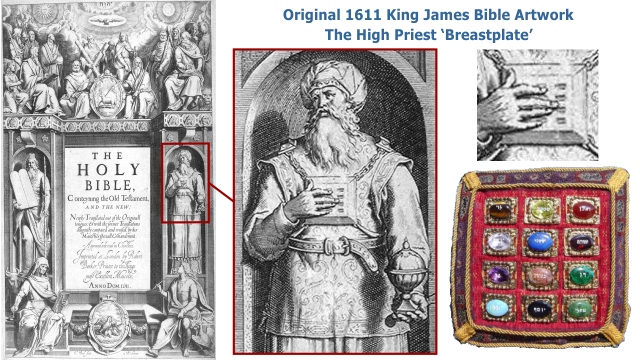 THE KOHANIM LEVITES AND THE CATHOLIC CHURCH
THE KOHANIM LEVITES AND THE CATHOLIC CHURCH
As I mentioned above, the Father of English History and Doctor of the Church, Saint Bede (Beda) had written on Ezra and Nehemiah; “Allegorically, the Levites represent those attached to the Catholic Church.” This fact is imperative in understanding who the Kohanim Levites were, and where they had went. Crucial information, that helps substantiate the history at approximately the same time the Romans had either taken over or absorbed the Kohen kingdom in Dia (Kos) just 7 miles across the sea from Crete. Their special tax status and the historical accounts about the many Kohen Priests from Dia (Kos), helps verify that these are the true Kohanim Levites. We also now have DNA to help match the many places they had migrated to. A science we can now use to match the DNA haplogroup of the many descendants that can be found in these same exact received cities as described in Deuteronomy 18:2, where they had received cities “because the Lord the God of Israel Himself is their inheritance”
My family had originally come to America from Canada, and before they migrated to New France, they had lived in Old France in a city called Paris. Many of them were Saints, Fathers and theologians. One of my ancestors, Noel Beda (Bede) was principal of the College of Montaign there at Paris in 1502, and syndic of the faculty of theology about 1520. He had fiercely opposed the divorce of the Norman king Henry VIII of England, and he had often let his voice be heard in Paris about his disapproval of the divorce. In fact, he upset the king so much, that he was arrested in the year 1530 and then banished to Mont Saint Michel, where he died the following year. Soon thereafter, the Beda name was corrupted and later became Bedard, whose family in the mid 1600’s was part of the first migrants to New France, now known as Canada. This is how some of the Kohen DNA would migrate to North America, and eventually my immediate family to the United States where I now live in the state of California. Today, there are estimated to be 300,000 Levites living now in the United States and another 25,000 in Canada.
This Noel Beda from Paris, I believe to be a direct descendant of Saint Beda who had actually lived and taught in Paris as well. In fact, I believe he had helped found the school there. Saint Bede had written many books that would indicate he was a Levite. Books such as Bede: On the Tabernacle, and Bede: On the Temple, where he was the first Kohen Christian and Catholic to put in writing the relationship of the Old Testament with the Tabernacle, and Solomon’s Temple with the New Testament, in which Solomon’s Temple would be built by living stones composed of both Jews and Gentiles. In the Book of Numbers, the Levites were charged with ministering to the Kohanim (priests) and keeping watch over the Tabernacle.(Wikipedia) These traditions have always been passed from father to son, and this is why Bede was such an authority to be chosen by the priesthood to be the voice of their Brotherhood.
This is why I believe based on Kohanim Levites, that they were the priests of both the Old Testament and the chosen Hebrew priesthood of Rome under Augustus Caesar of the New Testament and the New Covenant. The first Pontifex Maximus or Pope of this 6th Age was Augustus Caesar, who was also considered their anointed messiah because he had saved them and absorbed their priesthood into the Roman religion and government, where their influences can still be seen to this very day. A new law under Rome, in which both Jews and Gentiles would be accepted into the Universal Brotherhood, based on merit and work they had put in for this same said Brotherhood who would help establish the institution we know of today as the “Catholic Church.”
SOURCES:
All Open Source Linked to in Yellow
IMAGES:
Courtesy of Uncle Mikey
Moe is the founder of GnosticWarrior.com. He is a father, husband, author, martial arts black belt, and an expert in Gnosticism, the occult, and esotericism.
by Moe | Nov 17, 2013 | Apocalypse, Meaning of Words
It is nothing but fire, worms, howling, groaning, moaning, and there will be wailing and gnashing of teeth. Yeah, it’s like that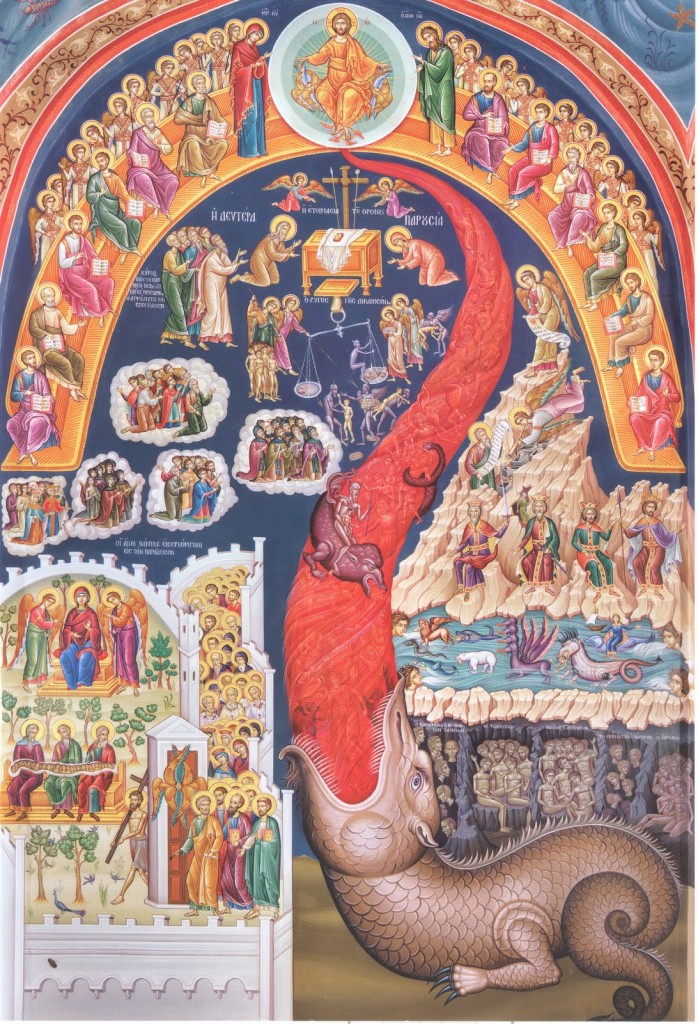 folks and some of you corrupt souls out there better get a spiritual clue or you will also suffer the same mortal fate.
folks and some of you corrupt souls out there better get a spiritual clue or you will also suffer the same mortal fate.
The newly elected Pope Francis seems to stigmatize these Revelation facts just about every week with statements and press releases coming out of the Vatican such as the one by the Pope this past week that truly wreaks of Apocalyptic over tones. Pope Francis had said in a homily last week;
The Pope described people engaged in corruption as “whitewashed tombs”, explaining that “they appear beautiful from the outside, but inside they are full of dead bones and putrefaction”. A life based on corruption was “varnished putrefaction”, the Pope said.
When the Apocalypse of St. John was written many centuries ago, I do not think John had realized that these events would be televised or “go viral” on Minerva’s web. A global Apocalyptic event that seems to be playing out right before our very eyes in a world where the man with one eye is king and those with two eyes are not only blind, they are literal walking obese zombies with rotting carcasses of flesh being eaten by worms as they feed the very beast that is killing them.
It was written that these days we are seeing now would occur and I personally do not think there has been a time in history that can almost perfectly match up to the predictions of John as they are today. A prediction that seems to be coming true with every passing day of darkness as the veil is lifted revealing the truth and light.
WHAT IS VARNISHED PUTREFACTION?
This varnished putrefaction I have written about before here on GnosticWarrior.com such as in my articles, Blood Alchemy: AS WITHIN, SO WITHOUT , Blood Alchemy: Red Blood of Lucifer , and Blood Alchemy: Black Blood of Satan. If you would like to get educated on what the Pope means by these statements and the days we are living in, I suggest you read those articles and many of the other ones I have written on these subjects.
Definition of Putrefaction
is one of seven stages in the decomposition of the body of a dead animal. It can be viewed, in broad terms, as the decomposition of proteins in a process that results in the eventual breakdown of cohesion between tissues and the liquefaction of most organs.
In terms of thermodynamics, all organic tissue is a stored source of chemical energy and when not maintained by the constant biochemical efforts of the living organism it will break down into simpler products. The breakdown of proteins in a decomposing carcass is a spontaneous process but one that is accelerated as the anaerobic microorganisms, already present in the animal’s digestive tract when it was alive, consume and digest the proteins that comprise the creature’s cells. As cells and their proteins are digested, the tissues of the body are left in a weakened state. Proteins are broken down into smaller components and these are excreted by the bacteria.
The excreted components, which include gases and amines such as putrescine and cadaverine, carry the putrid odor associated with a decomposing body. The gases are initially constrained within the body cavities but diffuse through adjacent tissues and into the circulatory system. Once in the blood vessels, the gases can then spread to other parts of the body. The result is visible bloating of the torso and then limbs. The increased internal pressure due to the rising volume of gas also helps to weaken and separate tissues. At some point, some part of the body will rupture, releasing the gas. As the bacteria consume all available proteins, the process of decomposition progresses into the next stage: skeletonization. (Wikipedia)
 APOCALYPTIC CONCLUSION
APOCALYPTIC CONCLUSION
When Pope Francis speaks of putrefaction, his statements are as true as the sun shinning in the heavens or the full moon lighting the dark night sky. It’s like that, and when he says the devil is like a lion circling his prey, he is not talking about Simba in the movie the Lion King, but the symbol of the lion that belongs to a specific tribe who is also spoken about in the Apocalypse of St. John such as in the second vision where he sees the four apocalyptic living beings, the lion, the bull, the eagle, and Man, surrounding a throne where sits the spirit of God.
It’s as if we are living in the days after the Crucifixion of Jesus to the time of St. Francis of Assisi who had tattoos placed on his very skin to signify Christ’s wounds corresponding to those left on Jesus’ body after he was crucified. Marks called the ‘stigmata.’ Tattoos that remind you not to live like a beast of the earth, and be more like Jesus so your flesh isn’t eaten by worms or your blood turned to a poisonous gas as your organs liquify to a state of varnished putrefaction.
O, then my best blood turn to an infected jelly – Shakespeare
Listen to the Pope’s homily at this link
Moe is the founder of GnosticWarrior.com. He is a father, husband, author, martial arts black belt, and an expert in Gnosticism, the occult, and esotericism.
by Moe | Nov 11, 2013 | History of the Brotherhood, Meaning of Symbols
“Red star, that from his flaming hair. Shakes down diseases, pestilence and war.”- Homer 
In ancient history, the sign of a comet was an evil omen, and a sign of death. It often meant the death of a king or Pope, such as in 858 A.D. when there was a comet seen before the death of Pope Benedict III; or in 859 a comet announced the death of Lotharius the Younger; and in 875, another for Louis II. There was “Charlemagne’s Comet “; in which a torch-shaped comet was seen above Germany in 814 A.D., foretelling the king of the Franks death.
Also, the infamous Halley’s Comet that would blaze in the European heavens once a century; foretelling the death of a king like that of Richard I, “the Lion Heart,” and another with that of James II, King of Scotland, in 1460.(1) Also, in 1910 it was widely anticipated and coincided with the death of King Edward VII of England (Burnham, 2000).
Let us not forget “Caesar’s Comet” of 44 B.C., during the reign of Augustus, that instead of being a sign of death, it was a sign of Caesar’s soul ascending to heaven after his death. The Comet was part of the political propaganda that changed the mythology of the comet being an omen that had meant death of a king, to meaning the assencison of the soul of the king. As part of this tool, his son Augustus in the year 42 B.C. had built “The Temple of Divus Iulius (Temple of the Deified Julius or Temple of the Comet Star) and was dedicated in 29 B.C. by Augustus for the “cult of the comet”. In the temple there was a large image of Julius Caesar, who according to Ovid, had a flaming comet affixed to its forehead:
To make that soul a star that burns forever
Above the Forum and the gates of Rome.(Wikipedia)
A comet was visible for 40 days and 40 nights at the time of the Emperor Constantine’s birth in 904 A.D., and another upon his death in 959. In 1208 A.D., the Jews thought the comet seen that year was a sign of the coming of their long-expected Messiah. (1)
Homer had written almost 3,000 years ago about comets and death in the Iliad; Warm’ din the brain the smoking weapon lift- The purple death comet floating over his eye.
Ironically, just like Homer had described the purple death comet floating over his eye, today, the purple comet known as Ison is currently located just inside the orbit of Jupiter. A planet that has as a massive eye, and a planet known as the King of the Gods…
Link to Space.com
WARS AND COMETS
Homer had further written in the Iliad; “As when high Jove (Jupiter) denouncing future woe, Over the dark clouds extend his purple bow; And as the purple bow Jove (Jupiter) bends at mortals, when of war he will the signal show – (In sign of tempests from the troubled air, Or from the rage of man, destructive war)
According to the Roman Stoic philosopher Seneca, shortly before the war of Achaia, B.C. 146, there was a comet as large as the sun, and dissipated the darkness of the nights: its disk was red and fiery. In 83 B.C., a comet signaled the war between Caesar and Pompey. Three Comets appeared before the War between Ludo- 841 and his Sons, that arose about the division of the Kingdom. In 1043, the War in Hungary succeeded a Comet. In 1472, two Comets appeared, which were succeeded by several Wars and violent Plague; at this time Charles Duke of Burgundy made War upon his Neighbours, which War lasted many years, and was ended by his death. Two Comets were seen, the one in the East, the other in the West, after which the Turks invaded Armenia. The appearance of Donati’s comet, in 1858, was quickly followed by the Italian war of 1859.(2)
The 17th century English poet, Milton said this in regards to comets, Satan, and war in his day; “Satan stood and like a comet burned, That fires the length of Ophiuchus huge In the arctic sky, and from his horrid hair Shakes pestilence and war.”(3)
Does this have any relation to Wormwood?
Revelation 8:11- the name of the star is Wormwood. A third of the waters turned bitter, and many people died from the waters that had become bitter.
DISCLAIMER:
This content relates to ancient mythology and the events of today. It is a form of Conspiritainment, that may or may not apply to prophecy, the Apocalypse, or life in general. User discretion is advised.
SOURCES:
1. Knowledge…: A Monthly Record of Science, Volume 5; Volume 31
2. The petitioning-comet: or, A brief chronology of all the famous comets By Democritus (pseud.)
3. Presbyterian Banner, Volume 96
4. Wikipedia and other open source material
Moe is the founder of GnosticWarrior.com. He is a father, husband, author, martial arts black belt, and an expert in Gnosticism, the occult, and esotericism.
 crime being perpetrated. DNA that may also be used to forecast future crimes and disobedience to the state.
crime being perpetrated. DNA that may also be used to forecast future crimes and disobedience to the state. Does our government appear to be pushing forward a new DNA policing agenda, where laws may easily be superseded by asking gullible people for simple permission to test their blood? Permission given by people, who essentially by their ignorance to the laws, comply with government authorities when they are simply asked to do so. All because they have been trained to “respect my authority” as Cartman from South Park would comically say.
Does our government appear to be pushing forward a new DNA policing agenda, where laws may easily be superseded by asking gullible people for simple permission to test their blood? Permission given by people, who essentially by their ignorance to the laws, comply with government authorities when they are simply asked to do so. All because they have been trained to “respect my authority” as Cartman from South Park would comically say.














